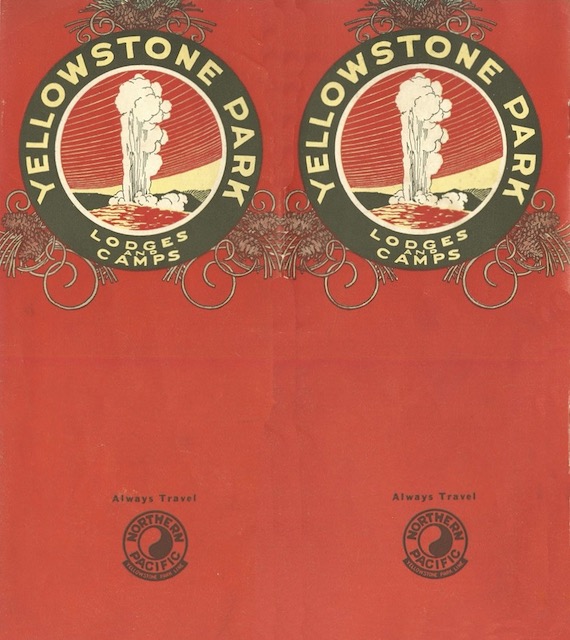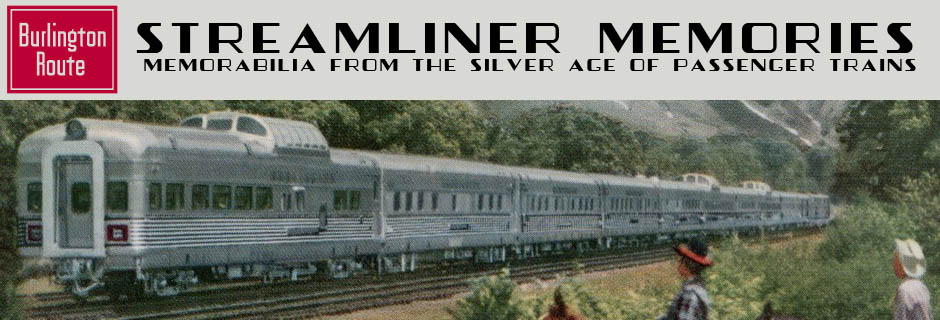This is one of those booklets whose main cover (as shown below) is actually the back cover. This format was often used in booklets published by the Canadian National, Rock Island, and several other railroads but not, as I recall, by the Northern Pacific. Yet this one has the Northern Pacific logo on the cover.
 Click image to download an 11.2-MB PDF of this 12-page booklet.
Click image to download an 11.2-MB PDF of this 12-page booklet.
This isn’t really a paradox as the booklet was really published by the Yellowstone Park Lodge and Camps Company. Northern Pacific may have printed its logo on the cover, but otherwise nothing in the booklet is about the NP.
A map on page 9, for example, says Northern Pacific at the top, near Gardiner, but also says Union Pacific on the left, near West Yellowstone; CB&Q on the right, near the Cody entrance; and C&NW on the bottom (with a note, “To Lander 189 miles”). The upper left corner also says “CMStP&P Ry and NP Ry” with mileages to Bozeman and Gallatin Gateway. If this were a Northern Pacific booklet, no railroads other than NP and CB&Q would be so prominently mentioned.
The map is conspicuously dated 1925, which means that is probably the date of the booklet. If so, multiply prices by 15 to get today’s dollars.
“If you have not visited Yellowstone, it is difficult to visualize its geography, road system and utilities for the accommodation of the thousands of visitors who come,” warns the booklet. “Do not let this concern you. Simply select your rail route to any of the gateways to Yellowstone, and, on arrival, place yourself in the hands of the Lodge Company.”
For a mere $25 ($375 in today’s money) for transportation plus $4.50 a day ($67.50 today) for food and lodging, visitors could stay for as long as they wanted. “You can live as cheaply in Yellowstone as you do at home!” the booklet advises. “Stay for your whole vacation. Stay all summer.” Compared to today’s costs, $375 sounds like a lot for a few bus rides, but $67.50 per day is a pretty reasonable price for food and lodging. However, working-class incomes were lower in 1925, so only middle- and upper-class people could afford a trip to Yellowstone.
